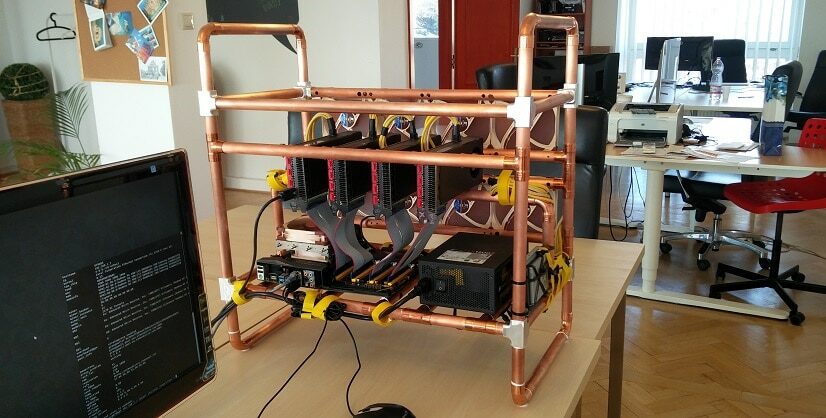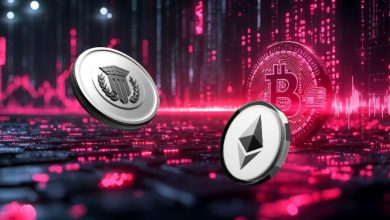The Ultimate Guide to Building Your Own Bitcoin Mining Rig

The surge in digital currencies has captured the attention of tech enthusiasts and investors alike. As cryptocurrencies continue to reshape finance, many have become fascinated with creating their own extraction systems. In this comprehensive guide, we will explore every facet of constructing your own setup—from the basics of understanding what is a bitcoin mining rig to assembling your hardware and ensuring long-term performance. Whether you are an experienced tech hobbyist or a newcomer eager to learn about cryptocurrency extraction, this article will provide the insights you need.
Before diving into construction, it is essential to grasp the underlying principles. At its core, a system designed for extracting digital currency operates by solving complex computational problems. This process validates transactions on a decentralized network, rewarding participants with digital coins. When someone asks what is a bitcoin mining rig, the answer is that it is a specialized computer setup optimized for these heavy computations.
Unlike a standard computer used for everyday tasks, this type of hardware is purpose-built. It combines advanced processing units—whether high-performance graphics cards or specialized integrated circuits—with a stable power source, efficient cooling, and a robust motherboard. The evolution of these setups over time has transformed them from basic computer modifications into sophisticated arrays that require both technical know-how and strategic planning.
Understanding what is a bitcoin mining rig goes beyond knowing its individual parts. It involves appreciating the balance between energy consumption, processing power, and the constant drive for efficiency improvements. In today’s competitive landscape, successful cryptocurrency extraction is as much about smart design and maintenance as it is about raw computing strength.
Key Components of an Extraction System
Constructing a powerful device for digital currency extraction begins with selecting the right hardware. Each element plays a critical role in overall performance and durability. Below, we outline the essential components, along with tips on how to make wise purchasing decisions.
- Motherboard and Processor: Start with a motherboard that supports multiple expansion slots. This allows you to add several processing cards without causing bottlenecks. A reliable CPU that can handle these connections is also crucial.
- Graphics Cards or ASICs: Many enthusiasts opt for high-performance graphics cards due to their flexibility and availability. Alternatively, application-specific integrated circuits (ASICs) offer superior efficiency but come at a higher cost and with less versatility.
- Power Supply Unit (PSU): Choose a PSU that not only meets the immediate power needs of your system but also provides headroom for future upgrades. Models with high efficiency ratings (such as 80 Plus certifications) are highly recommended.
- Cooling Solutions: Maintaining an optimal operating temperature is key. You may consider air cooling, liquid systems, or hybrid solutions to prevent overheating and ensure continuous operation.
- Storage and Memory: While the system isn’t heavily storage-dependent, a reliable SSD and sufficient RAM contribute to smooth operation and quick access to necessary data.
By carefully considering each component, you build a system that is not only efficient but also scalable. Every decision made during this stage has a direct impact on performance, energy consumption, and long-term profitability. For those wondering how to make a bitcoin mining rig, knowing the interplay of these parts is the first step in building a successful operation.
How to Build Your Ow`n Setup: A Step-by-Step Process
Transforming your plan into a functional device may seem challenging, but breaking the process into manageable steps can help simplify the task. Below is a clear, numbered guide on how to make a bitcoin mining rig while ensuring quality and performance:
- Plan and Research: Begin by setting a budget and researching the latest hardware options. Look for compatibility among the various components, and read user reviews to learn about performance and reliability.
- Procure Your Components: Purchase the essential parts: the motherboard, processor, graphics cards/ASICs, PSU, cooling system, storage devices, and any necessary accessories such as expansion cards or cables. Ensure that every component meets your project’s requirements.
- Prepare the Structure: Build or buy a frame or enclosure that can safely house your components. It should allow for ample airflow and easy access for future maintenance.
- Install the Core Components: Secure the motherboard within the frame, mount the CPU with an effective cooling solution, and apply thermal paste correctly to prevent overheating.
- Set Up Processing Units: Attach your graphics cards or ASICs using risers if needed. Ensure that the cards are spaced properly to avoid excessive heat buildup.
- Connect the Power Supply: Position the PSU and connect it to all the components. Confirm that the unit’s wattage is sufficient for the setup, leaving room for possible enhancements later.
- Implement Cooling Solutions: Install fans or other cooling devices to ensure steady airflow across the system. Efficient cooling is essential for continuous operation.
- Configure Software: With hardware in place, install the operating system and extraction software. Adjust the settings according to your extraction pool and operational preferences.
- Conduct Testing and Monitoring: Power on your device and closely monitor its performance. Verify that temperature levels, processing speeds, and energy consumption align with expectations. Make necessary adjustments to optimize performance.
- Maintain and Optimize: Regularly update your system, monitor performance metrics, and perform maintenance tasks such as dust cleaning and cable checks to ensure long-term success.
This structured list provides a concise roadmap for those interested in how to make a bitcoin mining rig. Each step is designed to guide you through assembling a system that balances performance with energy efficiency and durability.
Essential Tips and Considerations for Your Extraction System
Designing a device for digital currency extraction is not just about assembling components—it’s also about addressing key operational challenges. The following tips can help you optimize your system for both performance and longevity:
- Energy Consumption: The largest operating expense is typically electricity. Select components known for their efficiency, and consider solutions that reduce overall power usage.
- Heat and Noise Management: Processing hardware generates both heat and noise. Consider locating your device in a space that is both cool and well-ventilated. Additional measures such as sound dampening or extra cooling systems can further enhance performance.
- Location and Environment: The physical placement of your device is important. Choose an environment that is dry, dust-free, and has controlled ambient temperature to avoid premature hardware degradation.
- Compliance and Safety: Ensure that your setup adheres to local electrical and safety regulations. This is especially important in regions with strict compliance laws for electronic devices.
- Scalability: Design your device with future upgrades in mind. A flexible framework makes it easier to add additional processing units or upgrade existing components without starting from scratch.
- Cybersecurity: Protect your system from potential security threats by using strong passwords, enabling two-factor authentication, and keeping your software up-to-date with the latest security patches.
By keeping these considerations in mind, you can create a system that not only performs efficiently but also remains robust over time. These practical insights are essential for anyone exploring how to make a bitcoin mining rig that stands the test of time.
Maintenance and Troubleshooting for Long-Term Success
After setting up your extraction device, regular upkeep is crucial for continuous success. Even a well-designed system requires routine maintenance to ensure stable performance. Here are some best practices for maintaining your hardware setup:
- Routine Cleaning: Dust and debris can significantly affect performance. Regular cleaning of fans, heat sinks, and internal components is necessary to maintain efficient airflow.
- Check and Secure Connections: Over time, cables and connections may loosen. Periodically inspect the assembly to ensure all components are securely attached.
- Monitor Performance Metrics: Use software tools to track temperatures, processing speeds, and energy usage. Early detection of anomalies can prevent more serious issues.
- Troubleshooting: Should you encounter issues such as overheating or processing delays, adjust cooling settings or reconfigure software parameters. Documenting the problems and solutions can help streamline future troubleshooting.
- Software Updates: Keeping your operating system and extraction software current is vital for security and efficiency. Updates often include performance enhancements and bug fixes.
A proactive maintenance routine not only protects your investment but also ensures that your setup continues to operate efficiently. The careful attention to detail required for troubleshooting and upkeep is what distinguishes a well-managed extraction system from one prone to failure.
Financial Considerations and Return on Investment
Investing in a digital extraction setup is both a technical challenge and a financial decision. Before committing to building your own system, it is important to perform a comprehensive cost-benefit analysis. Here are the key financial factors to consider:
- Initial Hardware Costs: The upfront investment in quality components—such as processing units, power supply, and cooling solutions—varies widely. Balancing quality with cost is crucial to ensure a sustainable operation.
- Electricity Expenses: Ongoing power consumption can significantly affect profitability. Employing energy-efficient components and optimizing usage can help reduce overall costs.
- Market Fluctuations: The digital currency market is known for its volatility. Changes in market value and network difficulty may influence the profitability of your extraction efforts.
- Upgrade Potential: Future enhancements can improve performance and efficiency. When planning your system, consider the potential need for upgrades, and factor these into your overall budget.
- Return on Investment (ROI): Use online calculators and community feedback to estimate earnings based on current market conditions. A well-planned financial strategy can help you forecast when you might break even on your investment.
Conducting a detailed financial analysis before starting your project is essential. Balancing costs against potential returns will help you make an informed decision about scaling your operation. For those interested in how to make a bitcoin mining rig, understanding the financial landscape is as important as mastering the technical details.
Final Thoughts
Building your own extraction device is an exciting and challenging project that merges technology, finance, and innovation. This guide has provided an in-depth look at the process—from understanding what is a bitcoin mining rig to learning how to make a bitcoin mining rig and maintaining your hardware setup. By carefully selecting components, planning your assembly, and staying abreast of industry trends, you can create a system that is both efficient and resilient.
Every step of the process—from the initial research and budgeting to the final testing and ongoing maintenance—plays a crucial role in the success of your venture. Remember, while the technology behind digital currency extraction may seem complex, breaking it down into manageable parts can make the process both educational and rewarding.
By following the strategies outlined in this guide, you are well-equipped to build a system that stands as a testament to your technical prowess and entrepreneurial spirit. Embrace the challenge, remain adaptable, and enjoy the journey into the fascinating world of cryptocurrency extraction.
Whether you are looking to generate passive income, explore cutting-edge technology, or simply engage with a dynamic field, the opportunity to create your own setup offers endless possibilities. With persistence, careful planning, and the right approach, your investment in this project can yield both financial and personal rewards for years to come.

Source: The Ultimate Guide to Building Your Own Bitcoin Mining Rig



